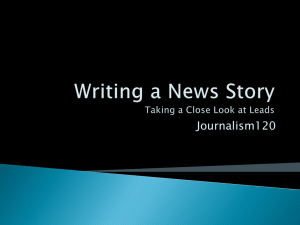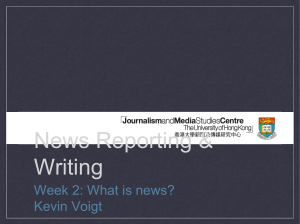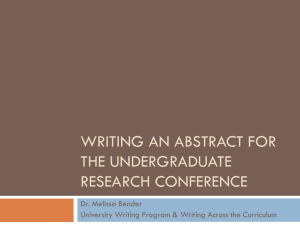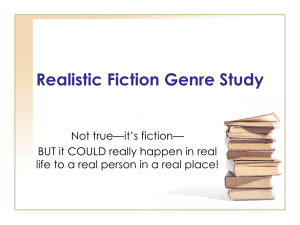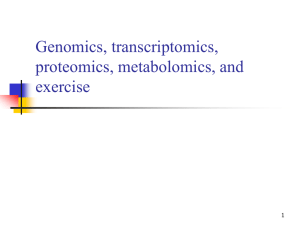Writing Reports, Proposals & Technical Documents
advertisement
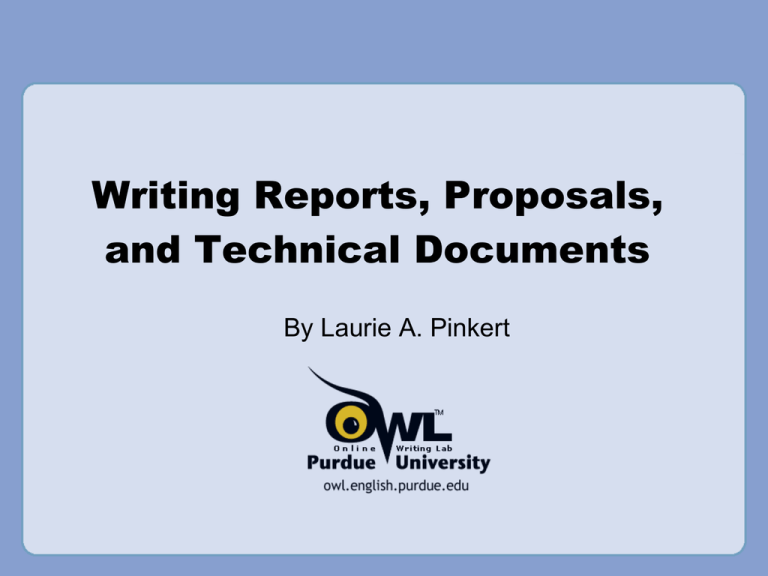
Writing Reports, Proposals, and Technical Documents By Laurie A. Pinkert Presentation Overview • Genres and constraints • Scientific style – Document design – Textual features • Writing and revision – Principles – An exercise Genres and Constraints • Reports • Proposals • Other technical documents (abstracts, etc.) What is Style? • Document design – Formatting standards • Rules or guidelines – Writing principles Disciplinary Differences Best Practices in the Humanities: Best Practices in the Sciences: – Flexible conventions for structure depending on the task; transitions, rather than headings, are commonly used to demarcate major sections of writing – Strict adherence to structural genre conventions, such as the abstract, introduction, methods, results, references – Reliance of text rather than visual elements to convey main ideas – Transitions generally signify changes in or two emphasize particular aspects of the author’s position (“therefore,” “furthermore,” in any case”) – Use MLA or other appropriate humanities styles to cite sources – Use multiple visual elements, such as charts or graphs, to demonstrate important concepts – Clear procedural transitions that signal particular steps in an experiment (e.g., first, second, third) – Use of a discipline-appropriate scientific style of citation Document Design • Headers – Use distinguishable features (e.g., bold, all caps, larger font, etc.) • Spacing between sections – Should be consistent • Each textual unit should use the same font and size – Headers should all be the same font and size – Body text should all be the same font and size • These sections may differ from one another Document Design • Tables and charts should be – – – – – All the same size Labeled consistently Scaled appropriately Embedded in text or located in an appendix Placed immediately after the paragraph that first refers to it – Referred to in text Simple Table * Sample from p. 16 <http://www.biochem.arizona.edu/marc/Sci-Writing.pdf> Complex Table * Sample from p. 18 <http://www.biochem.arizona.edu/marc/Sci-Writing.pdf> Figures * Sample from p. 19 <http://www.biochem.arizona.edu/marc/Sci-Writing.pdf> Principles for Writing Clearly 1. Open your sentences with short concrete subjects that name the characters. 2. Use specific verbs to name their important actions. 3. Get to the main verb quickly. 4. Open your sentences with information familiar to reader. 5. Push new, complex units of information to the end of the sentence. 6. Begin sentences constituting a passage with consistent topic/ subjects. 7. Be concise. 8. Control sprawl. 9. Use parallel structures. 10. Above all, write to others as you have others write to you. * Principles from Joseph Williams’s (2012) Style: The Basics of Clarity and Grace #4 - Start with Familiar Information By starting with the familiar, you should be able to make connections between your findings and your conclusions • TRY: After identifying the lethal allele, we modified our selections in the next round. • Not: The lethal allele changed my strategy. Language to Create Connections • Addition “Furthermore,” “In addition,” “Moreover” • Elaboration “By extension,” “In short,” “In other words” • Example “For instance,” “For example,” “As an illustration” • Comparison “Likewise,” “Similarly” • Cause and effect “Accordingly,” “Consequently,” “Hence,” “As a result” #7 – Be Concise but Clear • Use plain language Scientific reports are fairly straightforward, so avoid metaphors, similes, allusions, etc. • TRY: The selections in round two were informed by my prior experience. • NOT: Making selections was easy as pie. #6 - Begin with Consistent Subjects Topics are crucial for readers because readers depend on topics to focus their attention on particular ideas toward the beginning of sentences. Topics tell readers what a whole passage is "about." If readers feel that a sequence of topics is coherent, then they will feel they are moving through a paragraph from a cumulatively coherent point of view. But if throughout the paragraph readers feel that its topics shift randomly, then they have to begin each sentence out of context, from no coherent point of view. When that happens, readers feel dislocated, disoriented, and out of focus. #2 – Use Specific Verbs Topics are crucial for readers because readers depend on topics to focus their attention on particular ideas toward the beginning of sentences. Topics tell readers what a whole passage is "about." If readers feel that a sequence of topics is coherent, then they will feel they are moving through a paragraph from a cumulatively coherent point of view. But if throughout the paragraph readers feel that its topics shift randomly, then they have to begin each sentence out of context, from no coherent point of view. When that happens, readers feel dislocated, disoriented, and out of focus. Additional Resources • Visit the Purdue Online Writing Lab: http://owl.english.purdue.edu • Email brief questions to the OWL Mail Tutors: http://owl.english.purdue.edu/contact/owlmailtutors • Publication Manual of the American Psychological Association • Scientific Writing Guide: http://www.biochem.arizona.edu/marc/Sci-Writing.pdf The End




